In the culinary world, the Dutch oven stands tall as a kitchen titan, revered for its versatility, durability, and ability to conjure up delectable dishes with ease.
Yet, what if your kitchen arsenal lacks this revered vessel? Fear not, for the culinary landscape is ripe with inventive substitutes waiting to be discovered.
Like a symphony conductor with a diverse orchestra, we shall embark on a flavorful journey, exploring alternatives that promise to fill the Dutch oven-shaped void in your cooking adventures.
From humble pots to innovative hacks, prepare to unlock a world of culinary possibilities where ingenuity reigns supreme and deliciousness knows no bounds.
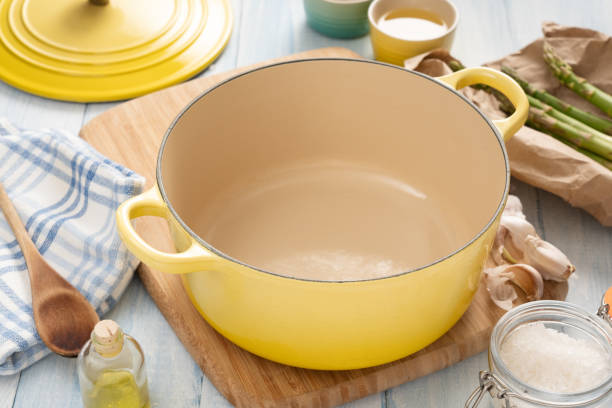
Substitute For Dutch Oven
A Dutch oven is a versatile and indispensable piece of cookware in the kitchen due to its ability to perform a variety of cooking techniques such as braising, stewing, roasting, frying, and baking.
However, if you don’t have a Dutch oven on hand, there are several alternatives you can use to achieve similar results:
1. Air Fryer
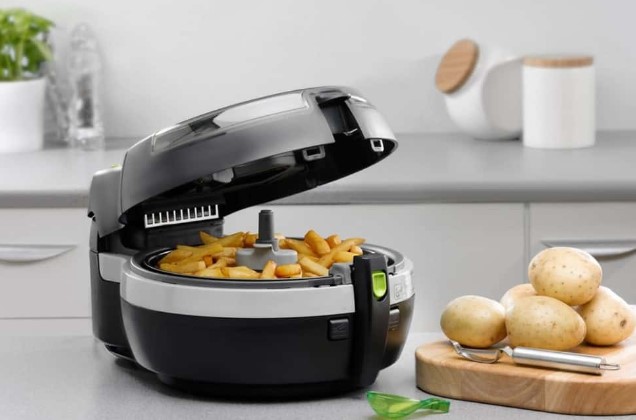
Enter the air fryer, a modern marvel of culinary technology that promises the crispiness of deep-frying with a fraction of the oil. Its sleek design and rapid cooking capabilities have earned it a place of honor in kitchens around the world.
As a substitute for the Dutch oven, the air fryer offers a unique approach to achieving crispy textures and even cooking.
While it may not be suitable for traditional Dutch oven recipes like stews or braises, it excels in transforming ingredients like chicken wings, fries, and even vegetables into crispy delights with minimal fuss.
Pros
- Rapid cooking time
- Crisps food without excessive oil
- Compact size and easy to store
- Versatile for various cooking methods
- Can achieve similar results to a Dutch oven for smaller portions
Cons
- Limited capacity for larger cuts of meat or batches of stew
- May produce less tender results compared to a Dutch oven
- Not suitable for all types of recipes
- Requires monitoring to prevent overcooking or burning
- Some models may be noisy during operation
2. Ceramic Pot
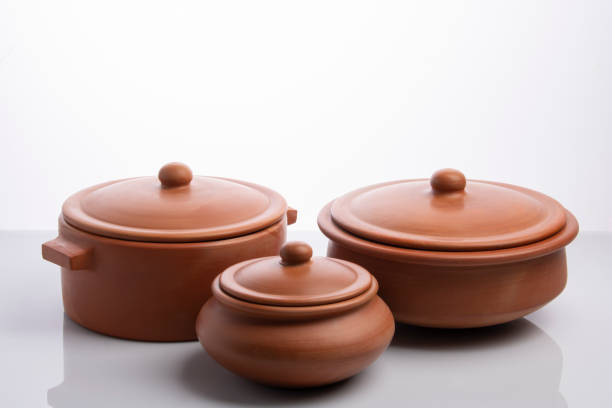
Behold, the ceramic pot, an unsung hero of the culinary world, revered for its gentle heat distribution and elegant presentation.
In the absence of a Dutch oven, this humble vessel steps forward, offering a steadfast companion for braising, stewing, and slow-cooking endeavors.
Crafted from durable materials and adorned with a rustic charm, the ceramic pot beckons to be filled with hearty soups, savory stews, and succulent roasts, ready to be transformed into culinary masterpieces.
Pros
- Excellent heat retention for even cooking
- Non-reactive surface preserves flavors
- Tightly fitting lids trap moisture for tender results
- Versatile for slow-cooking, braising, and stewing
- Aesthetic appeal for serving dishes directly from the pot
Cons
- May not withstand extremely high temperatures like cast iron Dutch ovens
- More prone to chipping or cracking if mishandled
- Limited versatility for tasks like searing or high-heat roasting
- Can be heavier and more cumbersome than other substitutes
- Requires careful handling to prevent damage or breakage
3. Deep Frying Pan
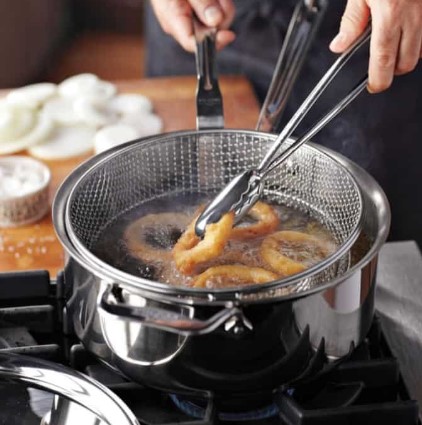
Behold, the deep frying pan, a stalwart warrior in the culinary arsenal, poised to conquer crispy delights with its formidable depth and expansive surface area.
As a substitute for the Dutch oven, this versatile vessel offers a gateway to golden-brown perfection, capable of immersing ingredients in bubbling oil with precision and finesse.
From crispy chicken to golden fries, the deep frying pan stands ready to satisfy cravings for indulgent treats and savory delights, all while imparting a touch of culinary magic to every dish it touches.
Pros
- Wide base and tall sides accommodate large quantities of food
- Even heat distribution ensures uniform cooking
- Tight-fitting lid traps moisture and flavors for tender results
- Versatile for braising, stewing, and baking
- Often readily available in most kitchens
Cons
- May lack the superior heat retention of traditional Dutch ovens
- Shape limitations for certain cooking methods like baking bread or roasting
- Not as versatile as Dutch ovens for various cooking techniques
- Requires careful monitoring to prevent burning or uneven cooking
- May not produce the same depth of flavor as dishes cooked in a Dutch oven
4. Electric Fryer
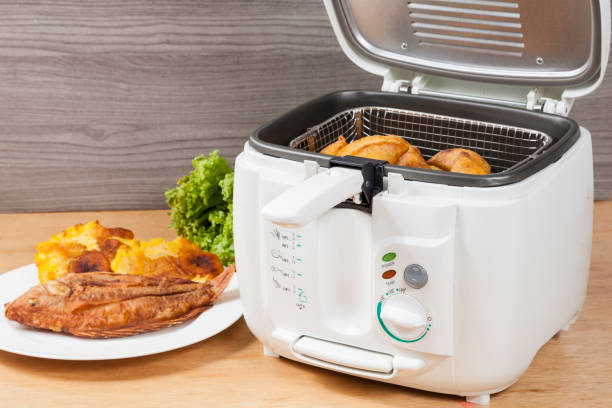
Enter the electric fryer, a modern marvel of convenience and efficiency, poised to revolutionize the art of frying with its sleek design and user-friendly interface.
As a substitute for the Dutch oven, this innovative appliance offers a streamlined approach to achieving crispy perfection, harnessing the power of electricity to deliver consistent results with ease.
From crunchy chicken tenders to golden onion rings, the electric fryer stands as a beacon of culinary prowess, beckoning enthusiasts to explore the realm of deep-fried delights from the comfort of their own kitchen.
Pros
- Precise temperature control for even cooking
- Adjustable settings and timer functions for convenience
- Suitable for tasks like braising, stewing, and baking
- Compact size and easy storage
- Offers consistent results with minimal effort
Cons
- Smaller capacity compared to traditional Dutch ovens
- Limited versatility for certain cooking methods like searing or roasting
- Not stovetop-compatible for tasks requiring direct heat
- May not achieve the same depth of flavor as dishes cooked in a Dutch oven
- Requires careful handling to prevent accidents or spills
5. Pressure Cooker
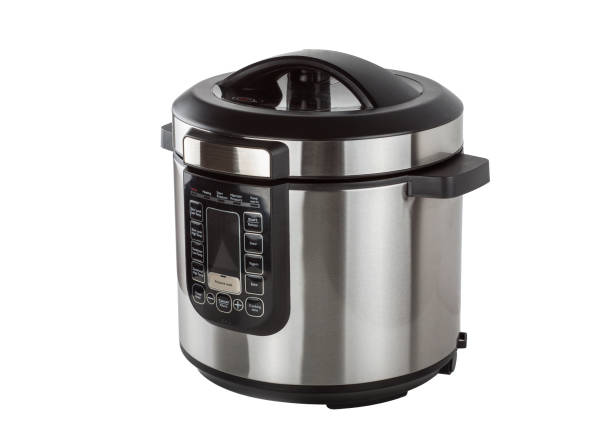
Enter the pressure cooker, a culinary powerhouse renowned for its ability to transform tough cuts of meat into tender succulence in record time.
As a substitute for the Dutch oven, this modern marvel of kitchen technology offers a shortcut to flavor-packed dishes without sacrificing taste or texture.
With its airtight seal and ability to generate high pressure, the pressure cooker becomes a vessel of culinary alchemy, infusing ingredients with intense flavors and meltingly tender consistency in a fraction of the time.
Pros
- Drastically reduces cooking times
- Tenderizes tough cuts of meat quickly
- Efficient cooking process yields consistently delicious results
- Versatile with multiple cooking settings
- Ideal for busy home cooks seeking convenience
Cons
- May not achieve the same depth of flavor as dishes cooked in a Dutch oven
- Intense pressure may not be suitable for delicate ingredients
- Limited control over browning and caramelization
- Requires careful handling to prevent accidents or overcooking
- Not suitable for all recipes or cooking techniques
6. Roasting Pan
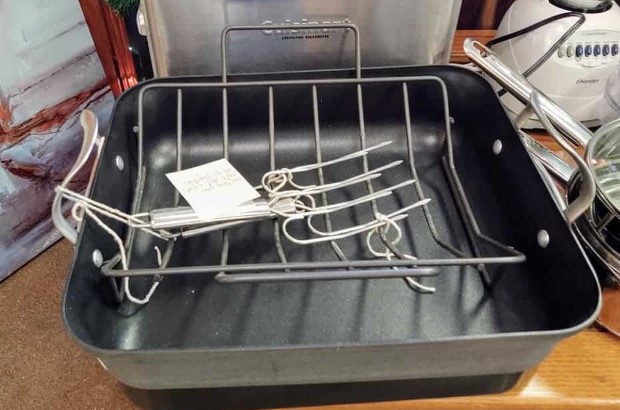
Behold, the roasting pan, a venerable vessel that has stood the test of time, epitomizing the art of culinary excellence through the ages.
As a substitute for the Dutch oven, this timeless classic offers a gateway to succulent roasts, savory vegetables, and delectable casseroles, enveloping ingredients in a symphony of flavors and aromas.
Crafted from sturdy materials and adorned with gleaming surfaces, the roasting pan beckons to be filled with seasonal delights, ready to be transformed into centerpieces of culinary splendor.
Pros
- Wide surface area allows for even heat distribution
- Sturdy construction withstands high temperatures
- Rack promotes air circulation and crispiness
- Suitable for searing, braising, and slow-cooking
- Ideal for high-heat roasting and achieving caramelization
Cons
- Shallower sides may limit capacity for holding liquids
- Lack of a tight-fitting lid may result in slightly drier dishes
- Not as versatile as Dutch ovens for certain cooking methods
- Limited ability to accommodate larger cuts of meat or batches of stew
- Requires careful monitoring to prevent burning or uneven cooking
7. Stockpot
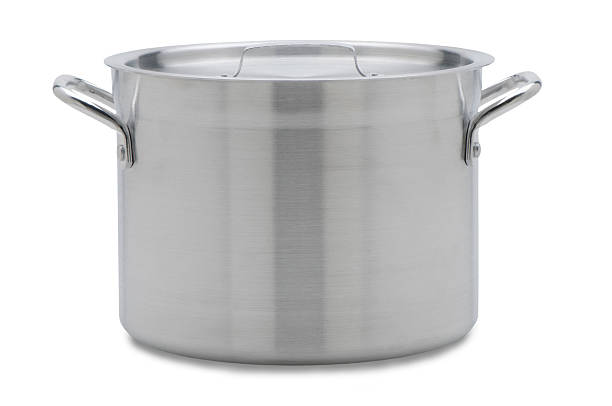
Enter the stockpot, a venerable vessel revered for its generous capacity and versatility in the culinary world.
As a substitute for the Dutch oven, this stalwart companion offers a gateway to soups, stocks, stews, and more, enveloping ingredients in a symphony of flavors and aromas.
Crafted from durable materials and boasting a spacious interior, the stockpot beckons to be filled with an abundance of ingredients, ready to be transformed into hearty, soul-warming dishes fit for any occasion.
Pros
- Generous capacity for preparing large quantities of food
- Tall sides and sturdy construction ensure even heat distribution
- Tight-fitting lid traps moisture and flavors for tender results
- Versatile for simmering, stewing, and braising a variety of ingredients
- Ideal for feeding a crowd or meal prepping
Cons
- May lack the superior heat retention properties of Dutch ovens
- Large size and bulky shape may be less convenient for certain tasks
- Not as suitable for transferring between stovetop and oven
- Requires careful monitoring to prevent boiling over or uneven cooking
- Limited versatility for certain cooking methods like baking or high-heat roasting
8. Wok
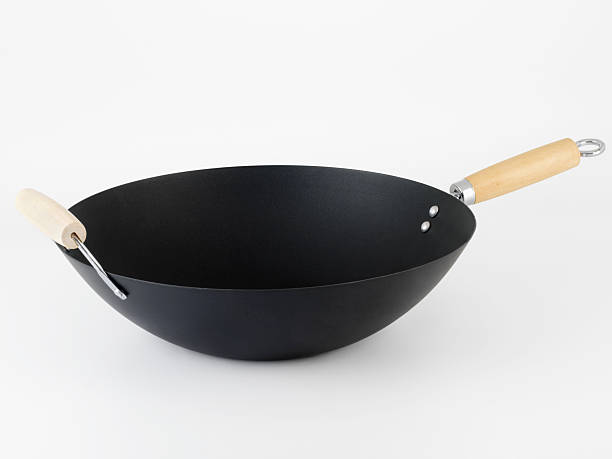
Ah, behold the wok, an iconic symbol of Asian culinary tradition and culinary versatility. As a substitute for the Dutch oven, this curved wonder offers a unique approach to cooking, harnessing high heat and swift movement to create dishes bursting with flavor and texture.
Crafted from sturdy materials and boasting a distinctive shape, the wok beckons to be filled with an array of ingredients, ready to be transformed into stir-fries, steamed dishes, and more, all while imbuing each creation with the essence of wok hei, the coveted breath of the wok.
Pros
- Versatile for a variety of cooking methods, including stir-frying, braising, and stewing
- Promotes even heat distribution for quick and uniform cooking
- Concave shape creates cooler areas for simmering or slow-cooking without burning
- Lightweight construction and easy maneuverability for frequent stirring or tossing
- Space-saving design makes it suitable for smaller kitchens
Cons
- Thinner walls may not retain heat as effectively as Dutch ovens
- Lack of a tight-fitting lid may result in slightly drier dishes
- Not as suitable for long, slow-cooking recipes
- Limited capacity for holding liquids or accommodating larger cuts of meat
- Requires careful monitoring to prevent burning or uneven cooking
Tips for Successful Substitution
Successfully substituting a Dutch oven with alternative cookware requires a combination of understanding the dish you’re preparing, the properties of the substitute vessel, and some culinary finesse. Here are some tips to help you navigate the substitution process effectively:
Understand the Dish
- Consider the cooking method and characteristics of the dish you’re preparing. Is it a slow-cooked stew, a hearty roast, or a crusty bread? Understanding the requirements of your recipe will guide you in choosing the most suitable substitute.
Evaluate the Substitute
- Assess the properties of the alternative cookware you plan to use. Does it offer similar heat retention, even cooking, and capacity to the Dutch oven? Understanding how your substitute compares to the Dutch oven will help you make necessary adjustments in cooking time, temperature, and technique.
Adjust Cooking Times and Temperatures
- Be prepared to adjust cooking times and temperatures when using a substitute vessel. Some alternatives may heat up faster or slower than a Dutch oven, which can affect cooking times. Experimentation and monitoring are key to achieving the desired results.
Consider Size and Capacity
- Ensure that your substitute vessel has adequate size and capacity for the dish you’re preparing. You may need to adjust ingredient quantities or cook in batches to accommodate smaller or larger vessels.
Adapt Cooking Techniques
- Different cookware requires different cooking techniques. For example, if using a shallow frying pan instead of a Dutch oven, you may need to adjust the amount of liquid and monitor for evaporation more closely. Similarly, if using a slow cooker, you may need to reduce the amount of liquid to prevent overly watery dishes.
Compensate for Differences
- Be aware of any differences between your substitute vessel and a Dutch oven, such as heat retention, lid availability, or material properties. Make adjustments as needed to compensate for these differences and achieve optimal results.
Experiment and Learn
- Substituting cookware is as much art as it is science. Embrace experimentation and learn from your experiences. Each substitution offers an opportunity to refine your skills and deepen your understanding of cooking techniques.
Don’t be Afraid to Adapt
- Sometimes, substitutions may lead to unexpected but delicious outcomes. Don’t be afraid to adapt and improvise based on the materials you have on hand. Flexibility and creativity are key attributes of successful cooking.
By keeping these tips in mind and approaching the substitution process with curiosity and adaptability, you can successfully substitute a Dutch oven with alternative cookware while still achieving delicious results in your culinary endeavors.
Frequently Asked Questions (FAQs) – Substitute For Dutch Oven
Q: What can I use instead of a Dutch oven?
A: If you don’t have a Dutch oven on hand, fear not! You can easily substitute it with a heavy-bottomed pot or a large, oven-safe skillet. These alternatives work just as well for braising, stewing, and baking your favorite dishes.
Q: Can I achieve similar results without a Dutch oven?
A: Absolutely! While a Dutch oven is fantastic for even heat distribution and retention, you can replicate its effects with a deep casserole dish or a roasting pan covered tightly with foil. Your dishes will still come out deliciously tender and flavorful.
Q: Are there any budget-friendly alternatives to a Dutch oven?
A: Of course! You don’t need to break the bank to enjoy the benefits of Dutch oven cooking. Consider using a slow cooker or a pressure cooker as substitutes. They offer convenience and versatility at a fraction of the cost.
Q: Can I improvise with common kitchen items if I don’t have a Dutch oven?
A: Absolutely! Get creative with what you have on hand. A large, oven-safe saucepan with a tightly fitting lid can serve as a makeshift Dutch oven. Additionally, a disposable aluminum foil roasting pan can work in a pinch for one-time use.
Q: Will using a substitute affect the taste of my dishes?
A: Not at all! While a Dutch oven offers optimal heat retention, other vessels can still produce delicious results. Just ensure you adjust cooking times and temperatures accordingly. With a little experimentation, you’ll achieve mouthwatering meals every time.
Q: Can I still make bread without a Dutch oven?
A: Definitely! If you’re craving freshly baked bread but lack a Dutch oven, try using a preheated baking stone or a cast-iron skillet instead. Simply create steam in the oven by placing a pan of hot water on the bottom rack to achieve that coveted crust.
Q: Are there any tips for using a substitute effectively?
A: Certainly! When using an alternative to a Dutch oven, pay attention to its material and thickness to ensure even cooking. Additionally, monitor your dish closely, adjusting cooking times and temperatures as needed to achieve the desired results.
Q: Can I use a different type of cookware for specific Dutch oven recipes?
A: Absolutely! Feel free to adapt recipes to suit the cookware you have available. For instance, if a recipe calls for a Dutch oven but you only have a slow cooker, simply adjust the cooking method and timing to accommodate the change.
Q: How can I make the most out of my substitute for a Dutch oven?
A: Maximize the potential of your alternative cookware by exploring diverse cooking techniques. Experiment with braising, roasting, and stewing different ingredients to discover new flavors and textures. With a bit of culinary ingenuity, the possibilities are endless!
Q: Can I still achieve a crispy finish without a Dutch oven?
A: Absolutely! While a Dutch oven excels at creating crispy exteriors, you can achieve similar results by using a baking sheet lined with parchment paper or a silicone baking mat. Simply ensure your oven is preheated and your dish is positioned for optimal heat circulation.
Conclusion
In conclusion, while a Dutch oven serves as a versatile and essential tool in the kitchen, there are viable substitutes available for those seeking alternatives.
Whether it’s utilizing a heavy-bottomed pot with a tight-fitting lid, employing a slow cooker or crockpot, or even improvising with a cast-iron skillet and aluminum foil, there are numerous ways to adapt recipes and achieve comparable results.
While each substitute may have its limitations, creativity and resourcefulness can often yield delicious and satisfying dishes, ensuring that the absence of a Dutch oven does not hinder culinary exploration and enjoyment.
Related Posts: